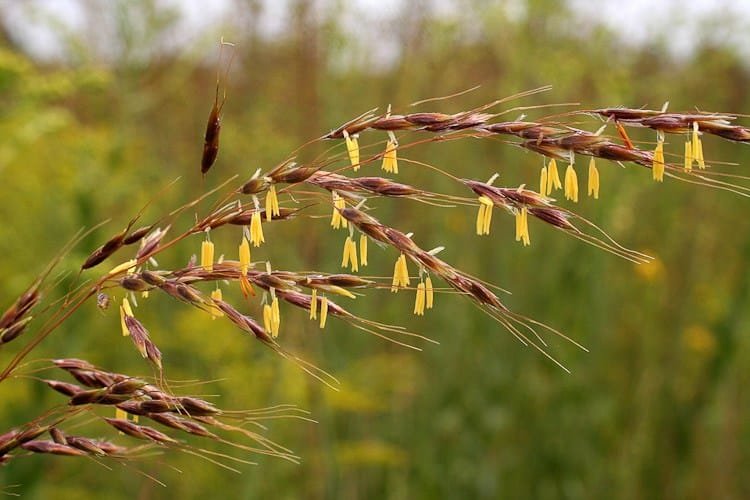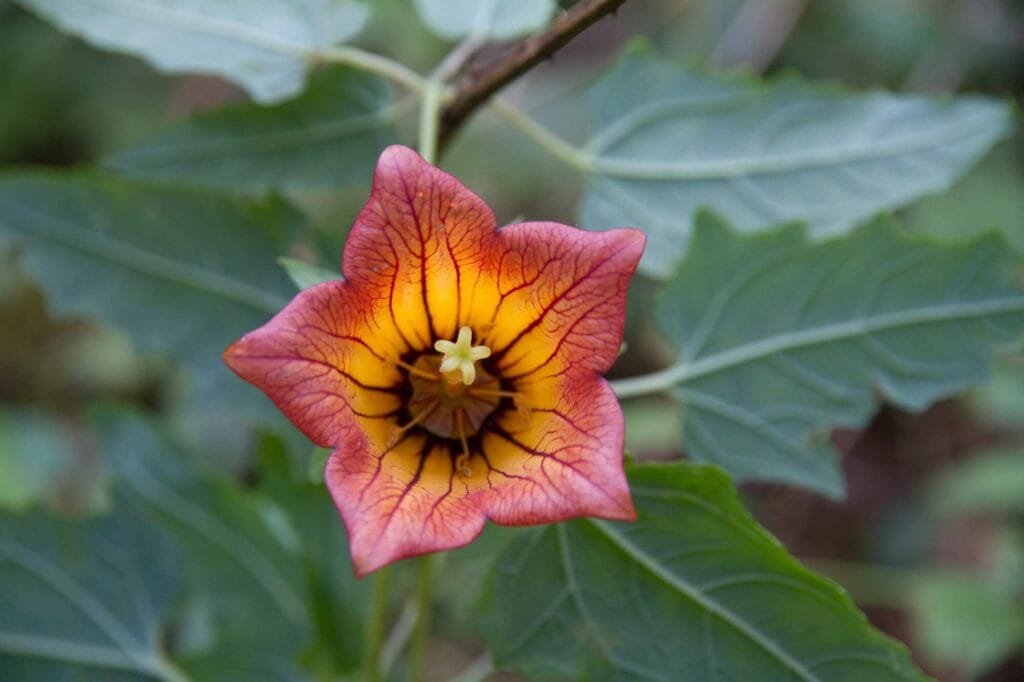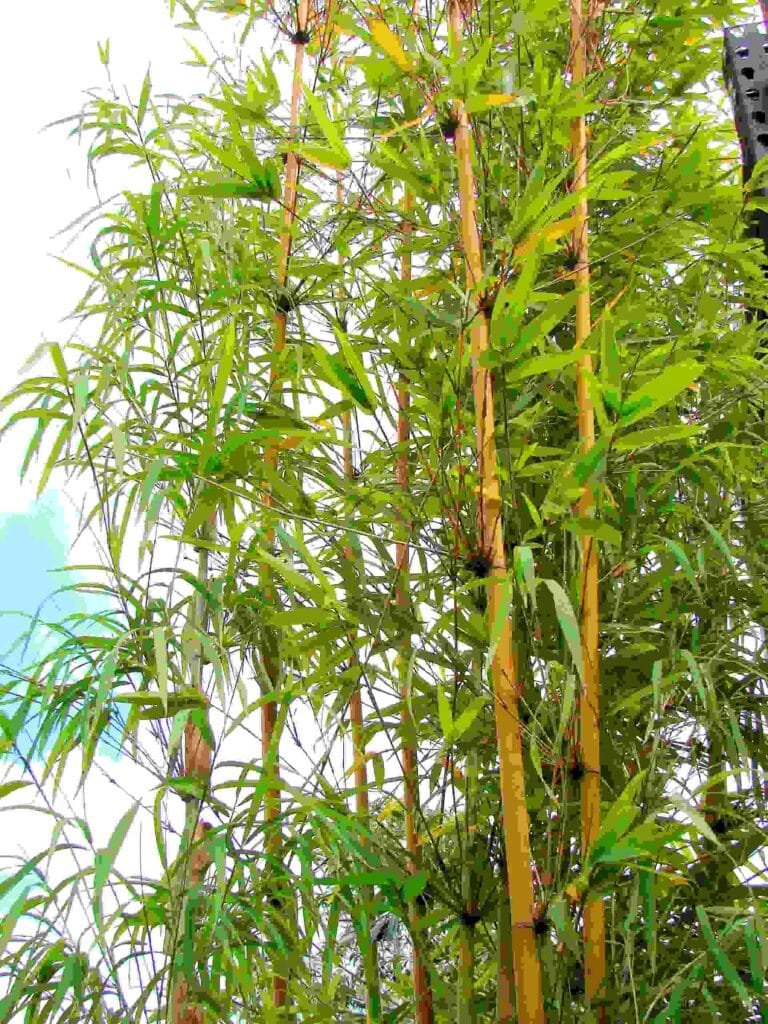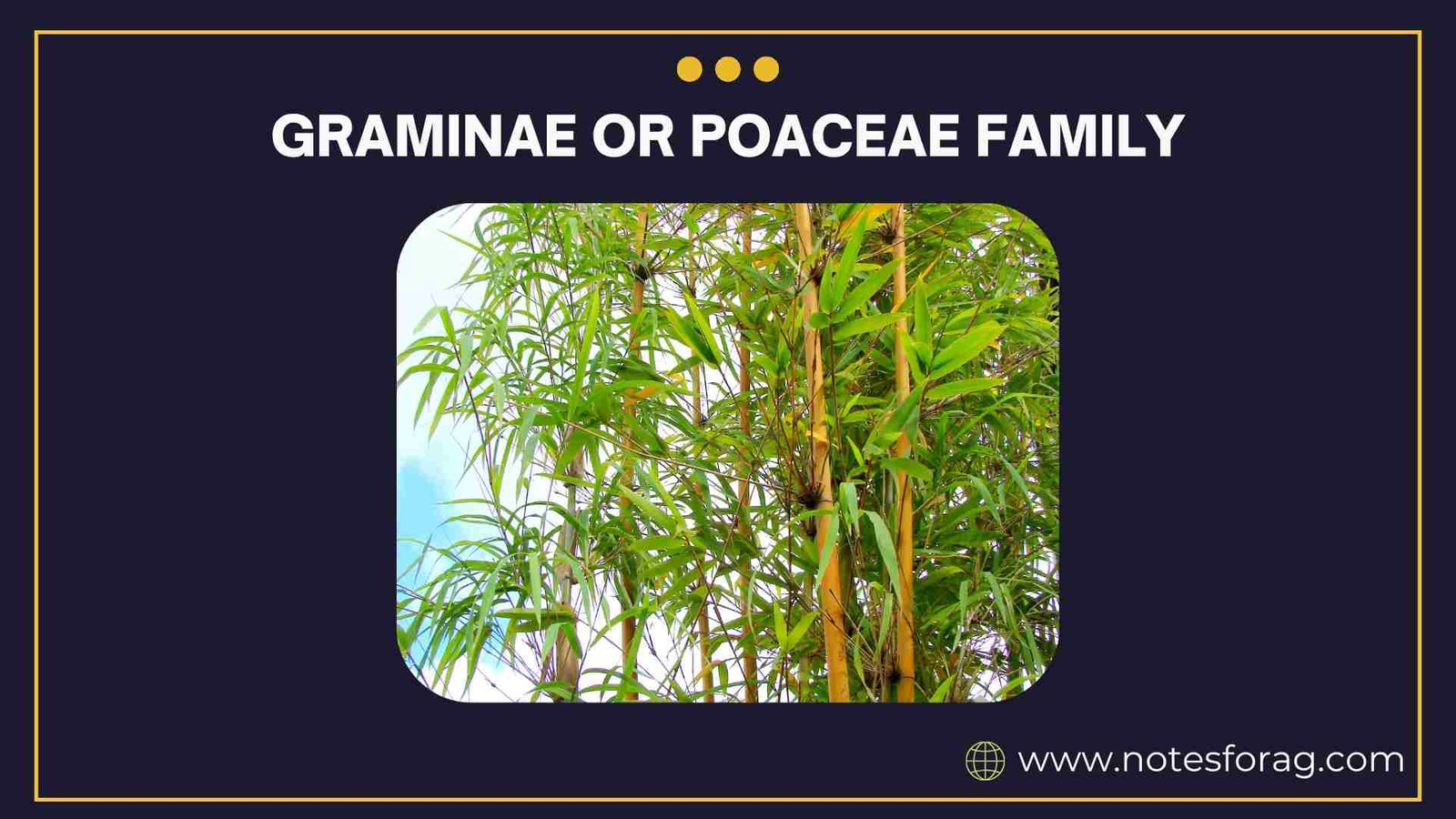Graminae or Poaceae Family

The Graminae or Poaceae family, commonly known as the grass family, is one of the most economically important plant families in the world. This family includes staple food crops like rice, wheat, maize, barley, and oats, as well as pasture grasses and species used in biofuel production. Members of this family are widely distributed and adapted to various ecological habitats, from tropical rainforests to temperate grasslands.
Understanding the taxonomy, structure, and ecological significance of the Poaceae family is crucial for agricultural science, botany, and environmental studies.
Summary of Graminae or Poaceae family
- The Graminae or Poaceae family is a large and economically important group of monocotyledonous flowering plants commonly known as grasses.
- It includes vital cereal crops like rice, wheat, maize, and barley that form the staple food for much of the global population.
- These plants play key roles in agriculture, ecology, and industry due to their adaptability, soil-binding roots, and nutritional value.
Table of Contents
1. Taxonomic Classification
Kingdom: Plantae
Clade: Angiosperms
Clade: Monocots
Order: Poales
Family: Poaceae (also known as Gramineae)
Poaceae is a large and diverse family with more than 12,000 species in over 700 genera. It includes annuals and perennials, ranging from tiny lawn grasses to tall bamboos.
2. Morphological Features
1. Root System
The grasses have a fibrous root system which helps in preventing soil erosion. These roots are efficient in absorbing water and nutrients from the soil.
2. Stem
The stem is usually cylindrical and hollow at the internodes, known as a culm. In some species like maize and sugarcane, the stem is solid. The nodes are prominent and provide structural support.
3. Leaves
Leaves are alternate, distichous (arranged in two vertical rows), and consist of three parts: a sheath, a blade, and a ligule. The sheath surrounds the stem, the blade is linear and long, and the ligule is a small membranous appendage that prevents the entry of water and debris between the leaf and stem.
4. Inflorescence
The inflorescence is usually a spikelet, which is the basic unit of the grass flower. Spikelets can be arranged in spikes, panicles, or racemes, depending on the species.
5. Flowers
Flowers are small, inconspicuous, and lack petals and sepals. They are generally bisexual and wind-pollinated. Each flower is enclosed by two bracts called the lemma and palea.
6. Fruit
The fruit is a caryopsis, commonly referred to as a grain. In this type of fruit, the seed coat is fused with the pericarp, making it distinct among flowering plants.
3. Economic Importance
1. Food Crops
The Poaceae family includes most of the world’s staple food crops:
- Rice (Oryza sativa): Main food source in Asia.
- Wheat (Triticum aestivum): Staple in temperate regions.
- Maize (Zea mays): Important for food, feed, and industrial products.
- Barley (Hordeum vulgare) and Oats (Avena sativa): Used for human consumption and animal feed.
2. Forage and Pasture
Many species like Bermuda grass, timothy, and ryegrass are cultivated as forage and pasture crops to feed livestock.
3. Industrial Uses
- Sugarcane (Saccharum officinarum): Primary source of sugar and ethanol.
- Bamboo: Used in construction, handicrafts, and as a food source.
- Switchgrass: Gaining attention for biofuel production.
4. Ornamental and Turf Grasses
Lawns, golf courses, and sports fields use various grass species such as Kentucky bluegrass and zoysia for aesthetic and practical purposes.
4. Ecological Significance
1. Soil Conservation
The fibrous root systems of grasses bind soil particles, preventing erosion and improving soil structure.
2. Carbon Sequestration
Grasses, especially C4 plants like maize and sugarcane, are efficient in carbon fixation, contributing to reducing atmospheric CO2 levels.
3. Biodiversity

Grasslands support diverse flora and fauna, forming a vital part of many ecosystems.
5. Classification within the Family
The Poaceae family is divided into several subfamilies, with the following being the most prominent:
1. Pooideae
Includes wheat, barley, and oats. Adapted to cooler climates.
2. Panicoideae
Includes maize, sorghum, and millet. Mostly tropical and subtropical.
3. Bambusoideae

Includes various species of bamboo, both woody and herbaceous types.
4. Chloridoideae
Includes hardy grasses like Bermuda grass, suited for dry regions.
6. Adaptations
1. C4 Photosynthesis
Many Poaceae members have evolved C4 photosynthetic pathways, making them more efficient in hot, dry environments.
2. Drought Resistance
Thick cuticles, deep root systems, and reduced leaf area are some adaptations that allow grasses to thrive in arid areas.
3. Rapid Growth and Regeneration
Grasses grow quickly and can regenerate after grazing or cutting, which is why they are dominant in grasslands and used as fodder crops.
7. Commonly Known Species
- Wheat (Triticum spp.): High nutritional value, major global cereal crop.
- Rice (Oryza sativa): Grown in flooded conditions, staple for more than half the global population.
- Maize (Zea mays): Versatile crop used for food, feed, and industrial products.
- Sugarcane (Saccharum officinarum): Leading source of sugar and ethanol.
- Bamboo: Over 1,000 species with diverse uses in construction and industry.
Conclusion
The Poaceae family is one of the most vital plant families in terms of ecological, economic, and agricultural significance. Grasses form the foundation of human diets and livestock feed across the world. They play essential roles in climate regulation, soil conservation, and maintaining biodiversity. Understanding their taxonomy and characteristics helps in their better utilization and conservation. With the challenges of climate change and food security, improving our knowledge of this family is more important than ever.
Frequently Asked Questions (FAQs)
What is the Graminae or Poaceae family known for?
The Graminae or Poaceae family is known for including important cereal crops like rice, wheat, maize, and barley, which are staple foods worldwide.
Why are grasses in the Poaceae family important in agriculture?
Grasses from the Poaceae family support global food security, prevent soil erosion, and serve as fodder for livestock and raw material for various industries.
What are common characteristics of Poaceae family plants?
Plants in the Poaceae family typically have hollow stems, parallel-veined leaves, and flowers grouped in spikelets, adapted to a wide range of environments.
Related Articles

